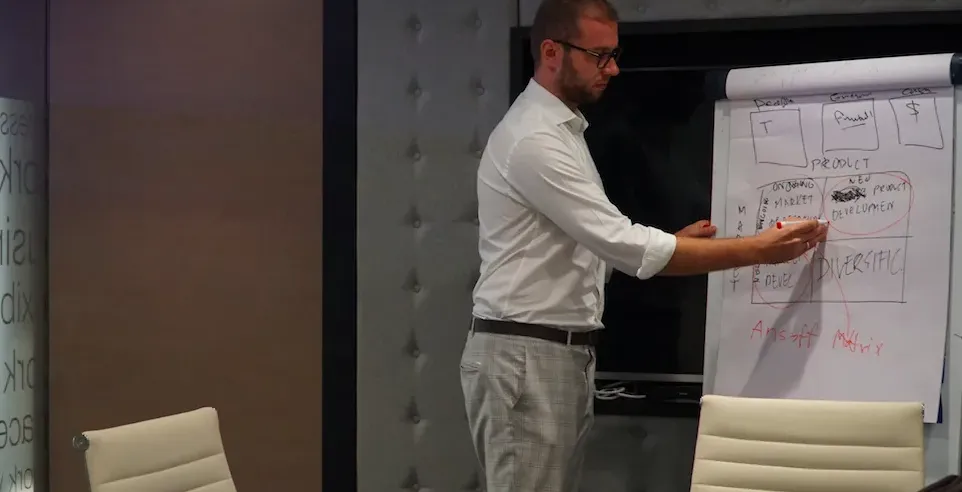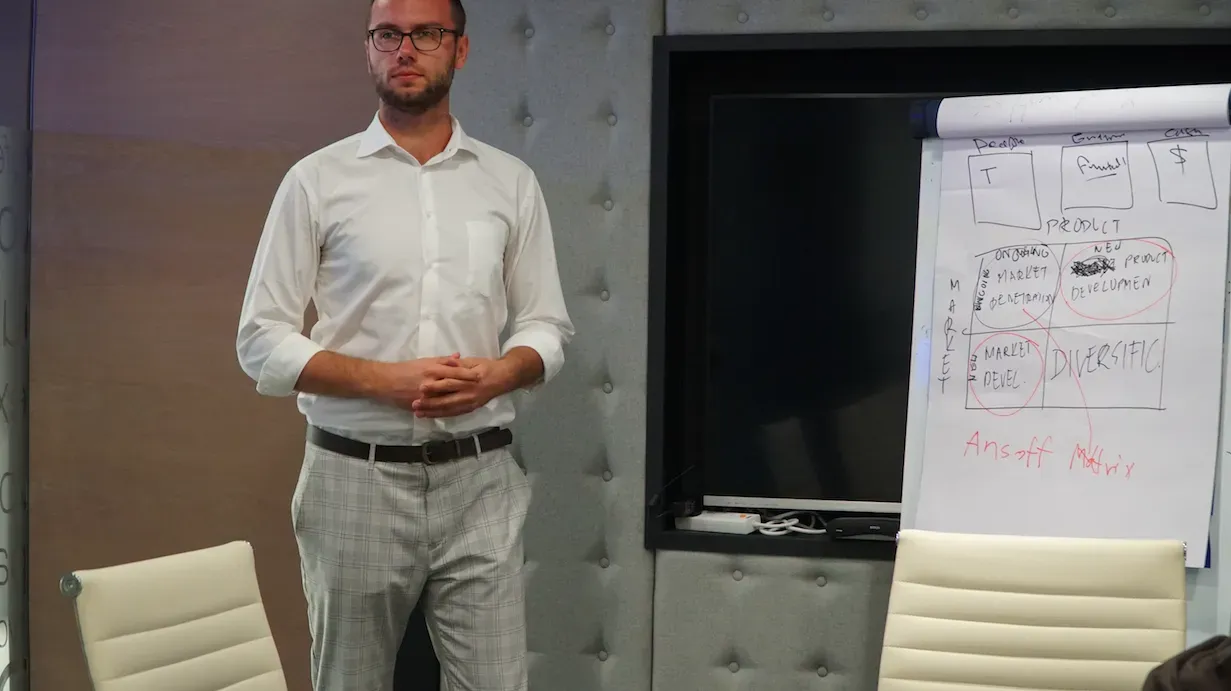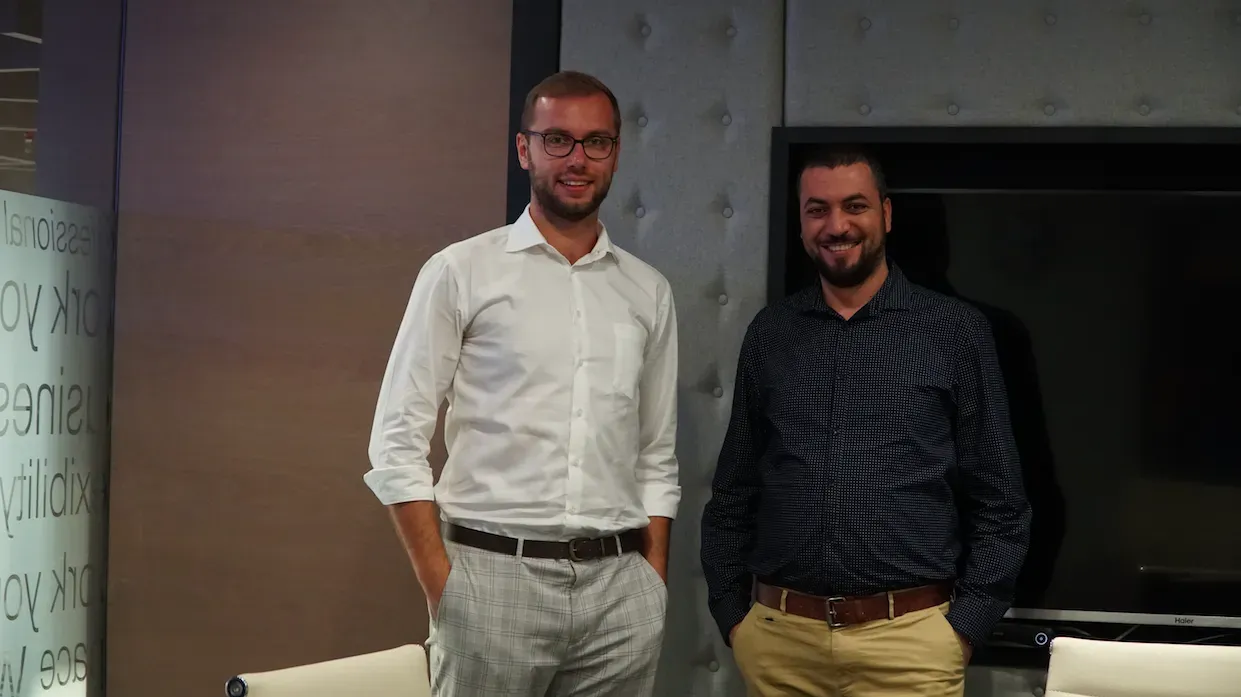
Kamil Sabatowski
2 December 2018, 8 min read

What's inside
- Founders without technical skills often make these mistakes
- Let’s start with founders
- Embracing the tech side
- Find a CTO
- Hire a freelance developer and monitor their work
- Find a tech partner
- BOTH business drivers and technical rockstars build successful tech products
- Ok, so you’ve already found your product-market fit. What's next?
I’ve worked as a Manager in both software development companies and product development teams. I know what kind of problems non-technical founders face. While working at software development companies as a project manager, I’ve been helping them throughout the entire product lifecycle.
I worked with founders with no technical knowledge, technical pros without any soft skills, and geniuses who had incredible technical and business skills. In short, I’ve seen it all.
And I’ve learned this:
Technical knowledge isn’t a must-have for building amazing technical products. But that’s not an excuse to ignore the technical side of the project altogether.

Founders without technical skills often make these mistakes
In my experience, non-tech founders sometimes:
- Believe that their vision is enough to support the project and don’t take extra care in finding matching technical expertise, instead of relying on randomly-chosen software development companies or freelance developers.
- Are so intimidated by the technical side of their project that they either never realize their idea or lose their independence to technical partners.
As you can see, in both cases founders fail to embrace the technical side of their projects. They miss out on the incredible opportunities bridging technical and business worlds offers.
Here’s my solution.
Let’s start with founders
Who is a non-technical founder?
- Business driver
- Responsible for driving sales/driving growth
- Has a clear vision, feels the mission, and focuses on solving real-life problems
- Makes business decisions
What kind of knowledge does he or she need to realize their project?
- Business knowledge - sales, marketing, communication, ability to reach target audiences and analyze their needs.
- Domain knowledge - knowledge of the market and its problems.
- Knowledge about how to pitch investors or how to fund a business - understanding different kinds of sources of capital and alternatives available on the market.
- Knowledge about how to verify a business idea - prototyping, lean startup methodology, different business models, MVP development.
- Plus: Key personality traits: determination, goal-orientation, hard-working, belief in their vision.
That knowledge is enough to build a great tech product. But successful founders are the ones who fully embrace the technical side of their project and take responsibility for it.
Embracing the tech side
If you’re a non-tech founder who wants to build a tech product, there are a few ways to get your project on the right track:
- Find a CTO
- Hire a freelance developer and monitor their work
- Find a tech partner (a software development company or digital product consultancy)
Find a CTO
This methods has its advantages and drawbacks. Here are some of them to help you decide whether this is the right course of action.
- You get technical expertise on board
- In-house quality assurance
- Finding a CTO who has the right skills and is a perfect project fit is very difficult. You’re looking for someone with interdisciplinary, full-stack competences such as backend and frontend development, development team management, low-level problem-solving, high-level analysis of product architecture and technology choice.
- Hiring a CTO is expensive (high salary/shares)
- It’s not easy to find the right combination of technical and business skills.
- A CTO is a short-term solution because as your product grows, it will require a lot of coding and you’ll need to hire someone eventually.
Case study scenario:
A young, inexperienced entrepreneur looking to reduce product development costs maximally acquires a CTO as a partner. The non-tech founder is then responsible for sales and building product awareness among target audiences. The CTO codes the first version of the product - the Minimum Viable Product (MVP). After a few months, they have a sellable product that brings value.
Challenges? For starters, it’s tough to find a CTO who is skilled, trustworthy, and engaged in the project. A CTO is usually an experienced tech expert who can get an amazing job with a huge salary at any company, so their alternative cost is high. If the product isn’t bringing the expected results, a CTO may lose faith it in and become discouraged. Moreover, quick product scaling will require more people on board, so an interdisciplinary skill set is crucial to building a technical team.
Learn more: Scaling agile development teams - 6 proven practices
Hire a freelance developer and monitor their work
This is a popular method for taking an idea for a tech product off the ground. It has many benefits, but also some disadvantages:
- Potentially the cheapest solution for building a product.
- High flexibility - freelancers work for several clients at the same time and are willing to apply small changes to products.
- Great solution for small projects (lasting 2-4 weeks).
- Finding freelance developers is faster than hiring in-house.
- Hiring talented developers is difficult (massive competition on the market).
- You need the skills required to manage and supervise the work of the developer (for example, defining project scope, development process management, quality assurance).
- Not a good option if your project scope isn’t well-defined.
- Consider the hidden costs.
Case study scenario:
You’re so excited about your idea that all you focus on is finding someone who could bring it to life. Platforms like Upwork are helpful for finding freelancers. If you source your developer globally, you’ll find the right person easily. You may even feel that you two understand each other. You brief the developer, and he or she sets down to work.
But what you get doesn’t match your expectations. That’s because it takes a lot of time and energy to define your product requirements. It’s something you’re still learning at this point. A solution to that is hiring an experienced project manager who would supervise the developer. But it’s tough to do that on a low budget.
Find a tech partner
Finally, non-tech founders may team up with a software development company that has ample experience in building tech products. Here are the pros and cons of this option:
- Extra competences on board (UX, design, DevOps, full-stack development, project management skills, battle-tested processes, demanding recruitment, sometimes also business support such as go-to-market strategies, product strategies, product discovery, scoping sessions).
- You can create a team that matches the requirements of your project perfectly.
- Offshore software development options are best when it comes to cost-effectiveness.
- Development companies are used to realizing projects coming from different sectors. Working with founders, they accumulate knowledge about common mistakes in product development. But founders should also look into the specialization of development companies - for example, when looking for e-commerce companies, pick those that have an excellent track record in this area.
- It’s challenging to pick the right partner from companies that look very similar at first glance (the market motivates more and more “newbies” to join - which increases the risk of not finding the right match).
- It’s essential to carry out this process carefully and comprehensively because there are many companies of questionable quality out there. That’s why you need to be 100% sure that communication with the chosen partner and their workflow won’t cause any problems.
- You need to find a partner experienced in remote work.
- Working with a tech partner is an excellent solution up until a certain point when you scale your business and need an in-house technical advisor (that’s when you hire a CTO).
Case study scenario:
A tech partner delivers the product but also often serves as a business advisor. That doesn’t mean a well-done job on the product side guarantees its instant success.
I have seen cases where founders counted on building an application and spreading the news among friends to get a snowball effect and bring in lots of new users. Unfortunately, that’s just not how the market works.
It’s just way too competitive. Partnering with a tech company won’t bring you success if the product doesn’t fulfill a market gap.
- Thirsty for more knowledge? Read about the DevOps best practices used in Sunscrapers projects.
BOTH business drivers and technical rockstars build successful tech products
If you want to build a tech product, you don’t need technical skills. But you need knowledge about product development and business models such as Minimal Viable Product (MVP), Lean Startup and Agile methodology.
It allows entrepreneurs to verify their ideas and business assumptions at an early stage to enable successful product development and launch.
Building an MVP is the ultimate objective for all technology entrepreneurs. But they often fail to understand what an MVP is all about. It’s not only the first working version of the application, but also a simple product that provides value and fulfills a need on the market.

Ok, so you’ve already found your product-market fit. What's next?
The Ansoff Matrix can help you. It’s a tool that facilitates strategic decision-making. If you found a product-market fit, then your market share is probably still negligible. That means the first strategy for the development of your business is to continue penetrating the market. To achieve that, increase sales volume and marketing activities. Technological expertise isn’t a bottleneck here.
But you’re not alone on the market. Almost every industry suffers from hyper-competition. Copycats quickly follow newly-created niche products. That’s where these two strategies come in: market development and product development.
I have often encountered cases where an application needed refactoring to scale the solution, develop the product efficiently and avoid spending long hours on patching the spaghetti code (which in this case was the result of the many pivots on the way to finding the product market fit).
Regardless of the direction in which you go - having in-house technological competence will be of great value to you.
Even if you start without a CTO on board and work with a freelance or technology partner, there will come a moment when business decisions will require an understanding of the product’s tech part. So get started right now.
----- Many thanks again to Huthayfa who invited me to give this talk at the Digital Entrepreneurs UAE in Dubai on November 14 2018



